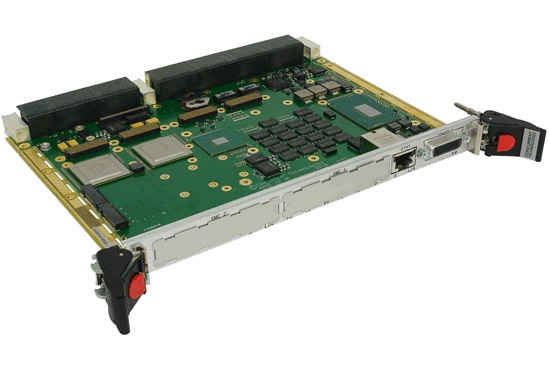This article was originally published in Embedded Systems Engineering and written by John Koon, Contributing Editor
Where various systems need to work cohesively, and system integrators are under constant pressure, VPX technologies respond to the needs of complex embedded systems.
Today’s military and other users of embedded systems have an endless appetite for greater integration, more autonomous operation, faster connectivity, and increased computing muscle. Especially on the military side, we are seeing new money and new technologies driving new strategies, platforms, and capabilities. That bodes well for our industry, because the electronic content in military platforms is rising dramatically.
Reasons that VPX is becoming the technology of choice for high-end systems designers include high performance per watt; VPX open-systems standards that lend themselves to interoperability and a broad technology ecosystem; and the inherent ruggedness of VPX, which enables it to stand up to high shock and vibration environments that demand conduction cooling and high signal integrity. User-definable and flexible, the VPX backplane offers a multitude of options, so it’s no wonder we’re seeing engineering companies using the platform in novel and unexpected ways.
Matching high reliability to rugged environment applications, VPX technologies are predicted to grow at a CAGR of more than 10% over the next five years. VPX is designed as a platform with a built-in feature that fully supports multiprocessing and provides multiple sources at the chip, board, and system level. VME has long been used in mission-critical embedded systems. However, its VPX (VITA 46) progeny surpasses VME in bandwidth and power. But VPX designers soon found that VPX yielded its share of system-level interoperability issues: Multiple vendors’ boards and components were often incompatible within the larger system design, presenting a major obstacle to VPX system development. The answer: OpenVPX (VITA 65), a leading system architecture standard in field-deployed, mission-critical embedded systems. OpenVPX realizes a framework for system-level interoperability for COTS-based VPX Line Replaceable Units (LRUs). LRUs’ main plus is that they are Two-Level Maintenance (2LM) compatible.
Quick Return to Operation
The ultimate goal of two-level maintenance in all complex defense systems, including OpenVPX, is to enable a field technician without special maintenance tools to quickly identify a faulty board and swap it in a harsh and hostile environment, rapidly restoring the system to operation. OpenVPX’s proven field-deployed readiness and advanced systems design flexibility hasten the delivery of next-generation customizable COTS solutions to the front lines.
The need for speed has never been more critical and VPX doesn’t disappoint at all. Since embedded defense systems must often be developed and deployed rapidly, it is very important that potential conflicts between the various profiles are eliminated as quickly as possible. VPX breaks out from the traditional connector scheme of VMEbus to merge the latest in connector and packaging technology with the latest in bus and serial fabric technology. It also combines best-in-class technologies to assure a very long technology cycle similar to that of the original VMEbus solutions. “VPX is a complicated technology that was purposely defined to be as open and expandable as possible to easily accommodate unknown future needs,” stated Jerry Gipper, VITA Executive Director. “The user community is taking advantage of this by defining OpenVPX profiles with supplier inputs to meet real-world application needs.”
Technologies called for in VPX include:
- 3U and 6U formats
- 7-row high speed connector rated up to 6.25 Gbps
- Choice of high-speed serial fabrics
- PMC and XMC mezzanines
- RF and optical connectors, all in one big ecosystem
Here are examples of the latest VPX products showing the future trends.
Open VPX Carrier Cards
One vendor offering 3U and 6U OpenVPX carrier cards is Acromag. The company uses surface mount technology and high precision pick-and-place equipment. Its carrier cards are for XMC , PMC and AcroPack I/O mezzanine modules. These carrier cards feature a high-speed PCI Express interface which meets the demands of high-performance industrial, defense, and scientific research systems. Choose from air-cooled or conduction-cooled models.
Rugged 6U carriers feature two PMC or XMC mezzanine slots with support for front or rear panel I/O and deliver 25W of power to each site. Connection to the OpenVPX board is via the Expansion plane or the Data plane. VPX REDI 3U models offer a single XMC slot and can be used as a VPX switch card, allowing a host CPU to communicate with up to three downstream cards in addition to the XMC card. Also offered are VPX bus carrier cards for AcroPack modules. These carriers support three AcroPack or mini-PCIe modules in any combination of I/O functions.
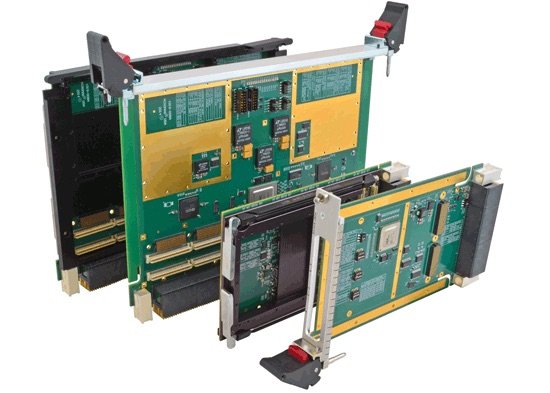
3U and 6U OpenVPX carrier cards for XMC , PMC and AcroPack I/O mezzanine modules (courtesy Acromag)
For easy integration with real-time software application programs, Acromag offers C libraries for VxWorks and other operating systems. The libraries provide generic routines (source code included) to handle reads, writes, interrupts, and other functions. Demonstration programs enable the developer to quickly exercise the I/O modules before attaching the routines to the application program. This diagnostic tool can save hours of troubleshooting and debugging (Figure 1).
6U VPX
Concurrent Technologies, a leading supplier of processor technology for demanding environments, has launched VR E7x/msd, a new 6U VPX computing board based upon the latest generation Intel® Xeon® processor E-2176M (formerly known as Coffee Lake). Supporting 50% more processor cores within the same power envelope, the Intel Xeon processor E-2176M has six cores compared to previous generation quad-core processors from the same product family.
In addition to improved processing capability, VR E7x/msd includes the option of front panel mounted USB 3.1 ports, 10 Gigabit Ethernet connectivity, enhanced storage options, and improved digital graphics outputs. Direct attached storage options include a SATA flash disk and two M.2 modules. These utilize PCI Express® connectivity and NVMe support for a high capacity solution that is suitable for use in challenging environments. VR E7x/msd is designed to fulfil a system management role for high performance 6U VPX processing solutions and so includes the option for dual XMC modules to support I/O expansion.
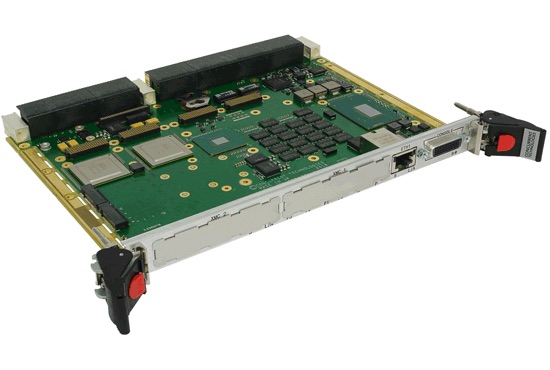
VR E7x/msd, 6U VPX Computing Board (courtesy Concurrent Technologies)
For security conscious customers, Concurrent Technologies offers several options: a TPM 2.0 device and Secure Boot are standard features with Sanitization Utilities and Guardian Security Package also available. Guardian enables customers to deploy sensitive applications through a range of hardware, firmware and software features that deter tampering and lock access to intellectual property.
Low-Profile Fiber Optic Transceivers
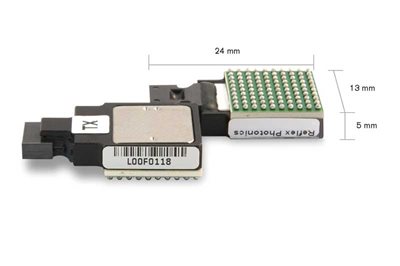
The LightABLE transceiver module measures 23 mm x 14 mm x mm (L x W x H) and has a low-profile form factor.
The demand for high-speed data networks drives the growth of fiber optics solutions. The main components to convert the digital data to light signals are fiber optic transceivers. Reflex Photonics offers a family of transceivers with different form factors and support speeds up to 300 Gbps. The LightABLE transceiver module measures 23 mm x 14 mm x mm (L x W x H) and has a low-profile form factor. It can operate in rugged environments with temperature ratings from -40 º C to 100 ºC and delivers reliable throughput with bit error rate (BER) of 10-15. Compliant with the VITA standard and MIL- TD 883, the module consumes 1.4 W per module (12-lane) and can reach 300 meters over OM3 fiber cable.
High Performing Backplanes
Elma Electronic provides VITA 46/65 VPX and OpenVPX backplane design and manufacturing. Newly released designs support VITA 66 and 67 optical and RF connectivity including VITA 67.3 RF/Optical modules. Instrumental in the development of the OpenVPX set of standards, Elma engineers developed the industry’s first VPX. Additionally, Elma offers the selection of 3U and 6U OpenVPX backplane profiles in slot counts from two to 12.
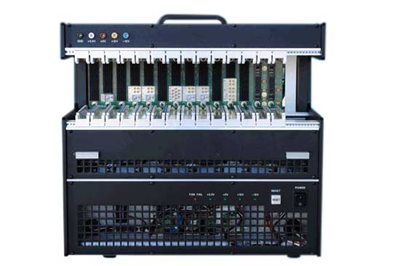
Now available are OpenVPX development platforms supporting C4ISR/EW Modular Open Suite of Standards (CMOSS) and the new Sensor Open Systems Architecture (SOSA) profiles. (courtesy Elma Electronic)
As signal speeds and system complexities increase, Elma’s backplane designs provide support for VITA 66.4 optical, 67.1 RF and 67.3 RF/Optical modules with a host of designs supporting 1000BASE-BX, 1000BASE-KX, 10GBASE-KX4, 10GBASE-KR, or 40GBASE-KR4 connectivity. Features include precision timing protocol and network synchronization along with a radial clock slot.
High-performance Layer 3 Switch
A high-performance Layer 3 switch (The ComEth4590) implementing two Ethernet switch matrices that control and separate physically the Control and Data Planes for highly secured VPX 3U systems has been introduced by Interface Concept. These two Ethernet packet processors, managed by the Dual core Arm processors and the Interface Concept Switchware, offer switching capabilities and multiple Giga, 10, and 40G Ethernet configurations.
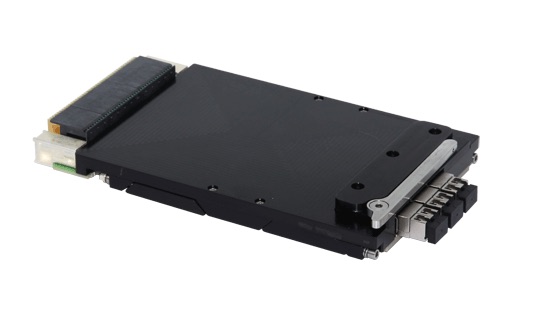
A switch which can be used for 3U architecture (courtesy Interface Concept)
The ComEth4590a provides unrivalled performance and reliability in the most demanding static, mobile, shipboard, and airborne environments. Facilitating control and data plane switching are Ultra Thin Pipe ports routed on rear I/O (P2), operating in 10GBase-KR or 1000Base-KX modes – seven of them in all and a front optical port supporting 10GBase-SR or 1000Base-SX. The ComEth4590a also implements a microcontroller dedicated to the management plan (VITA 46.11). The ComEth4590a is available in air-cooled and conduction cooled versions.
XMC for Signal Processing
Pentek launched its newest member of the Jade family of high-performance data converter XMC modules based on the Xilinx Kintex UltraScale FPGA. The Model 71800 is a co-processor module with an XMC PCI Express Gen 3 interface and general purpose I/O using parallel LVDS and gigabit serial ports.
The Jade Architecture embodies a streamlined approach to FPGA-based boards, simplifying the design to reduce power and cost, while still providing some of the highest performance FPGA resources available today. Designed to work with Pentek’s Navigator Design Suite of tools, the combination of Jade and Navigator offers users an efficient path to developing and deploying FPGA IP for data and signal processing.
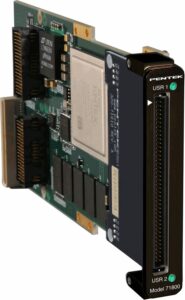
A high-performance data converter XMC module based on the Xilinx Kintex UltraScale FPGA. (courtesy Pentek).
The Model 71800 is pre-loaded with IP modules for DMA engines, a DDR4 memory controller, test signal and metadata generators, data packing and flow control to speed up the development process. The 71800 is available with the Kintex UltraScale KU035, KU060 and KU115, supporting a range of processing power. The majority of the Kintex UltraScale FPGA resources are available for customer installed IP for processing and management of I/O. The Model 71800 XMC module is designed to operate with a wide range of carrier boards in PCIe, 3U and 6U VPX, AMC, and 3U and 6U CompactPCI form factors, with versions for both commercial and rugged environments. They are designed for air-cooled, conduction-cooled and rugged operating environments, the Model 71800 XMC module with 5 GB of DDR4 SDRAM onwards. Additional FPGA options are available.
Upcoming Challenges
Presently, everything is going gung-ho related to the VPX technologies supporting switched fabric, spreading network traffic across multiple physical links with higher throughput. Let’s take a moment to ponder over future challenges in the embedded systems world. As the number of embedded systems grows so do security concerns, with approaches to this issue varying somewhat depending on whose perspective we consider. Security should cover all aspects of embedded system design from architecture to implementation. As interoperability is key to embedded systems for a seamless experience, secured embedded design is of prime importance. Finally, applications are always going to need more bandwidth and improving system performance is always a challenge facing the VPX industry. Recognizing this, the VITA organization is working on improving performance with optical technology. How VPX technologies will grow in this context remains to be seen.
Improving interoperability in various electronic modules a common problem that faces anyone developing a complex embedded computing platform. Getting all of the modules to work together is a formidable integration challenge for system integrators. Components and modules need to connect easily and quickly into the system: plug-and-play, not plug-and-fight. Are design standards enough? Should something else be done to ensure compatibility and interoperability? Should the standards be strengthened or new standards added?
Security is a critical challenge for a wide range of embedded systems applications. System integrators must optimize operational capability, maximize competition for systems development, ensure interoperability, and maintain commonality to reduce life-cycle cost.


